How to Find The Right Training Course For You
Permanent makeup has been increasing in popularity for several years now and shows no sign of diminishing - so it’s no wonder so many people are searching for courses to help them join the industry!
With an initial payment for training and equipment, PMU artists can stand to earn good money by helping people to live their best lives, and who wouldn’t want that?
But not all PMU training is made equal, and it’s important to find the right course for you that will help you achieve your PMU goals.
We’ve put together our best advice for finding the training course that will help turn you from enthusiast to expert without committing to a course that isn’t right for you.
While we won’t be recommending any specific trainers or courses, we will provide you with all the information you need and questions to ask to make sure you find the perfect training course to turn you into a certified cosmetic tattooer!
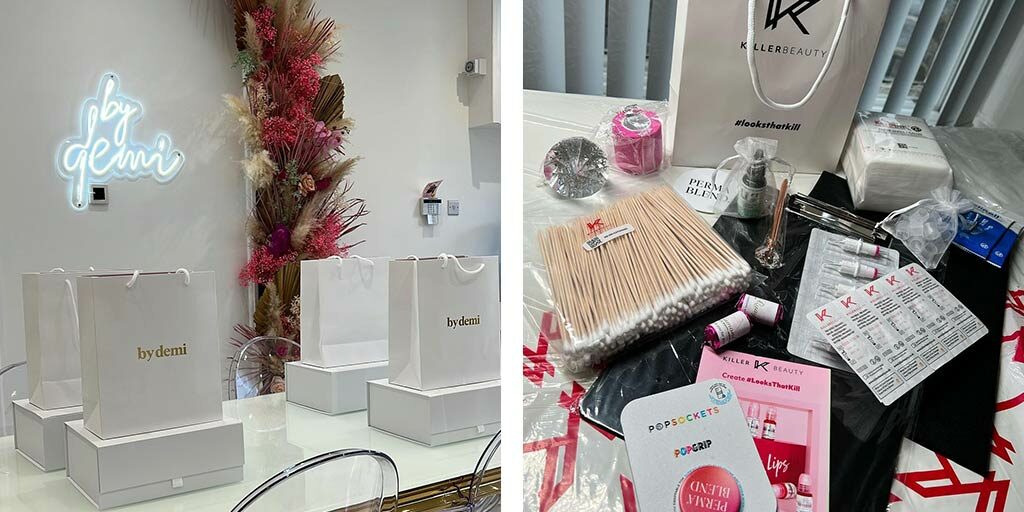
How do I find a PMU training course?
Before you can start appraising courses, you’ll need to find them!
If you’ve had PMU before and loved the results, it could be worth talking to your practitioner and seeing if they run a PMU training course. Even if they don’t, they may have a good recommendation for you, like their own trainer or a friend in the industry.
You can check on sites like the Guild of Professional Beauty Therapists, the British Association of Beauty Therapy, the Vocational Training Charitable Trust and Associated Beauty Therapists to find fully accredited and insured training courses, often by location or distance travelled.
You can also use a search term like “PMU training” and your town or city to find nearby courses.
Should I do a PMU training course that’s near me?
Ultimately, you should do the best training course that you can find and access, no matter where it is.
There are definitely benefits to having your teacher nearby though; not only will you save money on transport and accommodation during your course, but you will have the trainer close by for continued support after the course. Plus, if you really get on with their training style and feel you could learn more, you can easily go back to them for any advanced training they might offer.
How far you are willing to travel comes down to your individual choice and if you want to travel further to attend a specific course, that is completely up to you. You are investing in your career, whatever choice you make. Some PMU artists even train overseas – so don’t let distance deter you if you have your heart set on a specific trainer or course! It may very well be worth the extra cost and travel time.
Is the course accredited?
This is hands down the most important thing to know when booking onto a training course. All the money and time you’ll spend will mean nothing if the trainers are not fully qualified, accredited and insured.
Don’t sign up to a course unless they can provide proof of accreditation! And don’t be afraid to ask for this – the trainer will be happy to provide.
Does the PMU artist produce high-quality work?
It sounds obvious, but can be easy to overlook with all the other things you need to think about - are their results to a high standard? Does their portfolio include the kind of styles and techniques you want to learn? How long have they been practicing, and do they get return clients? Remember that PMU treatments need to be topped up every few years, and if they aren’t coming back to you for the top-ups then you’re losing out on a lot of custom. Returning customers also indicate that the artist has a good relationship with their client base – another skill which is useful to learn from them.
Check their social media - especially Instagram - thoroughly. They should be demonstrating consistently great work and be able to show the positive feedback they’ve received. It’s also important that you’ve seen their healed results, as that’s what really matters to your future clients. Bonus points if they have a great social media presence and include that education in your course!
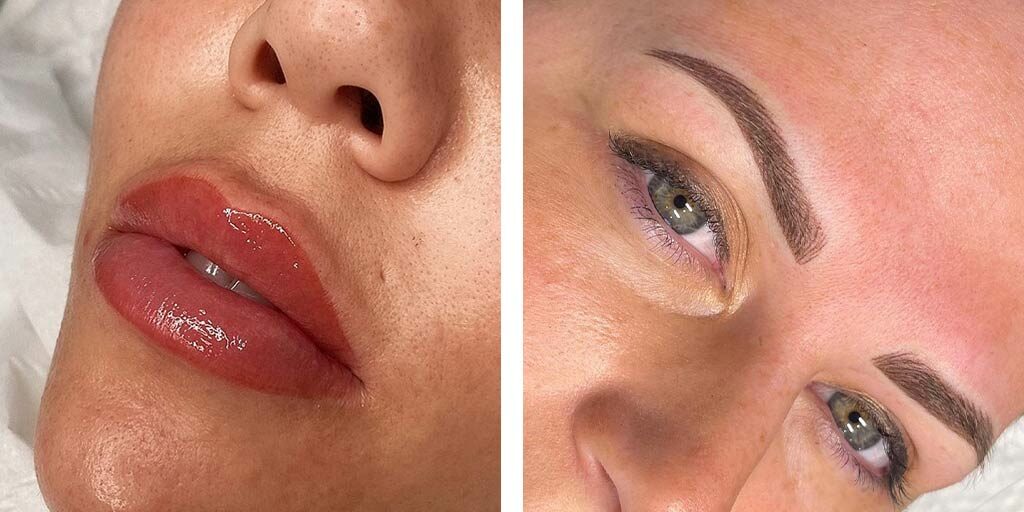
Is the PMU training course reputable?
A good PMU artist doesn’t always make a good PMU teacher. While this can make things difficult for those starting out their PMU training journey, you should ideally be looking for positive feedback from previous students.
Their website and social media might have testimonials, but do a little Google digging too, as a trainer with negative feedback isn’t likely to share it themselves. Find previous students of theirs and check out their work as well, because if the standard isn’t the best, it might well be down to the teacher. If none of their students have gone on to work in PMU successfully that’s a big red flag – but this is highly unlikely to happen with a qualified trainer.
Does the course cover everything I need to get started?
If you come out of the other side of your training and aren’t fully equipped to start practicing PMU, you’ve not done the right course!
Sometimes a course might be advertised as an introduction, or an advanced course. These won’t set you up to be a PMU artist and will require further training, so make sure you always do your research. Most courses labelled ‘beginner’ will be what you are looking for, but always check. If in doubt, contact the trainer and ask - will this course qualify me to practice PMU professionally?
How much learning will I need to do ahead of the course?
You should expect to do a certain amount of learning at home ahead of attending your in-person training course.
At the very least you’ll need to successfully complete an industry-specific blood borne pathogens course, and your teacher may assign some other theory work that doesn’t require supervision.
What about hygiene and safety?
Learning about how to keep yourself, your clients and your workspace hygienic and safe is incredibly important. If your PMU course doesn’t include information about these topics, you run the risk of carrying out unsafe treatments or ruining your reputation before you even begin.
PMU is essentially a medical procedure, and as such needs to be performed with incredibly high health and safety standards. During PMU, the skin is broken meaning that the treatment runs the risk of passing on blood borne infections or viruses if optimum hygiene practices aren’t adhered to.
You’ll need to learn about how to get your workplace to the correct standards of hygiene by using disinfectants and correctly covering your surfaces and equipment, as well as the PPE equipment you’ll need to use on a daily basis. It’s very important to know which elements of your equipment can be disinfected, which need an alternative form of cleaning, and what needs to be disposed of safely and as clinical waste.
Other elements of hygiene control include using the correct equipment, getting good quality disposables, and ensuring that clients are given the right information and aftercare products at the end of their treatment - we’ll discuss that more later on.
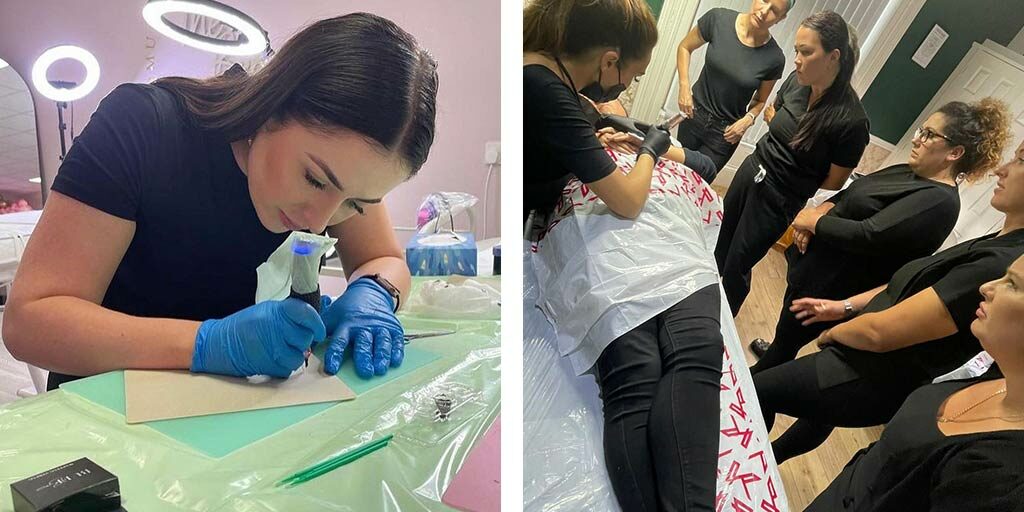
What materials and workbooks do they provide?
There’s a lot of technical learning to be done on a PMU training course, and part of your fee should be going towards high-quality materials that you can take home and refer back to whenever you need (although this can’t replace continued support from your teacher). Most courses provide detailed workbooks or manuals, which qualified students will continue to use and refer to once they begin working.
What practical experience is on offer?
You can’t become fully trained in PMU until you’ve practiced on a live model, so this should always be a part of your course. Usually this comes towards the end of the course, after you’ve built up the necessary skills and techniques and watched live demonstrations.
You’ll usually have the opportunity to try out any techniques that you’re learning on practice skin before treating a real model, and your trainer will have demonstrated their work on a live model in front of you. Practice skin is perfect for practicing specific strokes and techniques, but it won’t tell you everything you need to know about working on real skin.
Once the course is complete, it is highly likely that your trainer will request that you complete a number of case studies, and they will provide your certificate and full qualification afterwards. These case studies allow you to gain experience of working independently, with your trainer providing feedback on each client and stepping in where required if they have any concerns. If the trainer is happy with your work, you will receive your qualification and you can begin working!
These case studies act as a safety net for not only the student but the trainer too, as their student’s work reflects their training and overall reputation. If it is not up to standard, it’s unlikely that the trainer would allow you to go out into the industry and begin working without some additional help from them. However, most dedicated trainers would not let their student complete the course if they had any serious issues with working on the live models, they would usually offer extra help and attention to rectify this.
Will you learn about tools and PMU machines?
Learning about the tools of your trade is essential for a good PMU training course. It can be a little overwhelming at first, as you’ll need to learn about cartridges, needle configurations, machine types and pigments.
You need to have a really solid grasp of all these elements before you can practice PMU. It’s likely that you’ll end up using the equipment provided in your kit, as that’ll be what you learn with. Over the course of your career you might get the opportunity to try different hand pieces and needle cartridges, and you might decide to switch. You are always free to try out different equipment if you want to – this is how you will find out what works best for you.
Many PMU training course fees will include the cost of your first machine, which will probably be whichever machine your teacher prefers. Make sure to take that cost into consideration when pricing a training course, as buying a good quality PMU machine can cost a significant amount. If you can, find out the specific machine and do some research to make sure it’s a good piece of equipment that will last you a long time.
There’s a fair amount of technical knowledge needed for this, and the more you know about how your PMU machine physically works, the more control you’ll have over the process.
What techniques and styles will you learn?
Every PMU artist has their own list of treatments and techniques that they’re known for. As a student, you’ll be learning what they’re best at doing, whether that’s a basic style like powder brows or their very own signature take on the technique.
It should go without saying that if you want to do brow treatments, your PMU training course should include how to perform brow treatments. Some courses will be dedicated to one form of PMU, while others will teach you a range of treatments such as lip blush, brows and liners – however, the more treatments taught the more expensive and in depth the course will be. Tackling multiple treatments in one course may be overwhelming, especially for beginners with no prior experience or who are lacking in confidence initially.
If you want to go into a more specialised area like scalp micropigmentation or areola tattooing, you will need a course that goes in-depth into that subject, or you can learn those skills at a further training course once you have the basics covered and you are qualified.
While you’re checking out your potential PMU training course, make sure that they definitely teach what you want to learn, and if there are any specific techniques you want to learn - maybe you adore the look of a pixel brow - that they’re included. More advanced techniques can be alluring but it makes sense to start with more basic training and then to complete additional advanced courses in the future once you are qualified and have some experience.
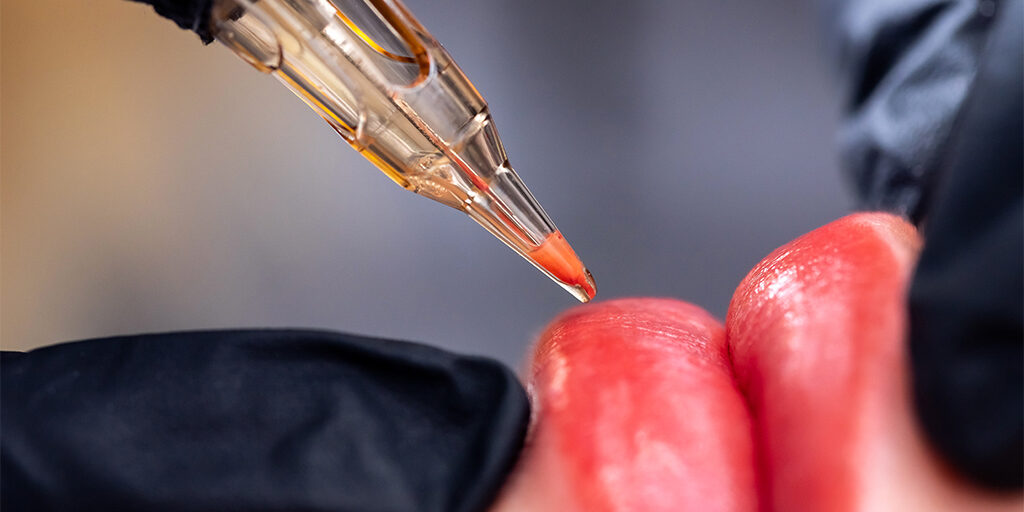
What modules does the course include?
There are a huge number of practical considerations to take when carrying out PMU, and you want to be as informed and aware of them all as possible. We’ll discuss them briefly here, as your teacher will go into much more detail.
Skin anatomy is incredibly important, as you need to fully understand the canvas that you’re working with, how it moves and what it’s made up of - this will include a fair amount of scientific and medical knowledge.
Colour theory and shade matching are other vital parts of a good PMU treatment. PMU training courses will usually include some information on the Fitzpatrick Scale, which is the globally-recognised cheat sheet for skin tones which many pigment manufacturers work in accordance to. Beyond that, you’ll learn about undertones of colour, and maybe even about how to colour correct your pigments.
Learning how to assess your client’s skin tones and undertones is essential to avoid any unwanted tones or colour disasters. You will probably get your first taste of this when you work on a live model, as this is a great opportunity to use your colour theory and skin tone assessment in practice for the first time.
This knowledge is vital in a treatment that aims to look as natural and neutral as possible. It is very easy to get colour theory wrong if you have not received adequate training and results can be disastrous for the clients.
Additionally, as PMU fades over time the pigment may fade with unwanted tones. Part of being an expert PMU artist is that you’ll be able to predict those changes based on a skin tone assessment and modify for them before they even happen.
Some PMU artists train in corrections and/or pigment removal. While this isn’t compulsory, it does give you another revenue stream, especially if you’re willing to fix up other artists’ work. Once a client has gotten great results from you - even if that’s just removing the pigment placed by someone else - they’re much more likely to return. This is a skill you can easily learn at an advanced training course once you’re fully qualified. It also means you won’t have to turn away clients with old or faded PMU!
Preparing the treatment area is another important practical element that comes into PMU - not just in terms of hygiene, but the pre-draw process. For brow treatments, brow mapping is an essential skill, and if you want to do lip blush, eyeliner, scalp or areola, you’ll need to learn how to pre-draw before you start.
Mostly you’ll learn the skills for this, but you’ll also get to try out a few different pre-draw tools like pencils and semi-permanent pens, highlighters, brushes, and eyebrow guides and rulers. You’ll also learn how to keep your pencils in good shape with a hygienic sharpening tool.
Whenever you’re carrying out an expensive treatment in a very visible place, both you and your client should be 100% happy with your pre-treatment preparations and pre-draw before any permanent marks are made.
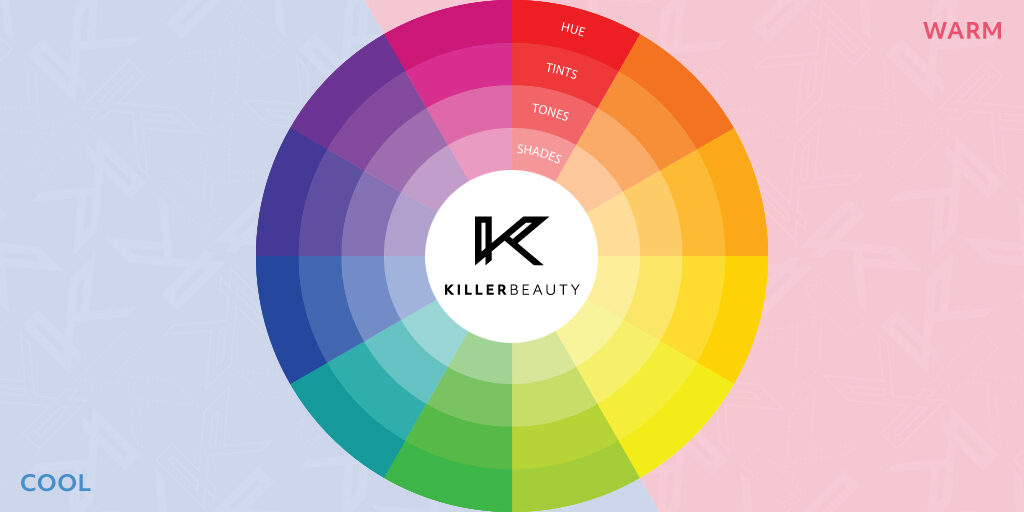
What will I learn about aftercare?
After hygiene, aftercare is everything. You can carry out the most incredible treatment, get the colour and undertones just right, take a fantastic picture that gets all the Likes, but if you haven’t explained the aftercare process properly, the healed results will not be up to standard.
Aftercare is as much about health and safety as it is the aesthetic of the healed results. As mentioned earlier, PMU is a medical procedure and hygiene is a huge factor in its safety and longevity. This includes advising your client on how often, how, and with what they should be cleaning the treatment area.
It also includes giving them a realistic expectation of the healing process. Unless you want panicked daily calls from clients, they need to know how the pigment is likely to change, what healing will look like in terms of scabbing and peeling, and if/when they need to come back for a top-up.
But you should also advise your client on how to live their lives in the weeks before and following the procedure, pretty much as soon as they book in. For example, before the treatment they’ll need to avoid sun damage and specific skincare ingredients on the treatment area, and can’t drink alcohol or caffeinated beverages in the 24 hours running up to their appointment.
Afterwards, you may need to set some rules for the best possible result. Usually that means sleeping face up, forgoing swimming and any submersion in water, not exercising for up to two weeks, avoiding sun exposure, and not applying makeup, creams or retinol to the area.
Sometimes, it’s not even about the long-term results, but setting realistic expectations about how they might look and change during the healing process. If your client is expecting to get PMU the day before their wedding, they need to know that their wedding photos will not look good!
It’s entirely possible that someone could book in for a PMU treatment having no idea that it takes a couple of weeks to fully heal and think that they can have it done just before a holiday or big event. They may have only seen fresh or healed results on social media, which is why knowledge of the healing process and transparency about it for your clients is so important.
You’ll also need to learn enough about the risks and signs of infection to be able to share that knowledge with your client. Even if you do everything right in terms of hygiene, there is still the risk of infection if your client doesn’t follow all of your rules precisely - and possibly even if they do.
If they follow your aftercare guide and still see redness, swelling, discharge or experience an elevated temperature, it’s important for them to know that they need to seek medical attention immediately without waiting for your opinion.
What about aftercare products?
Your teacher will probably share with you their favourite products for aftercare. We couldn’t advise you on a single best product as this will depend on the treatment done, skin types, allergies and intolerances, and any ethical factors such as veganism.
Although you’ll be best starting out with the aftercare products you learned about on your course, that doesn’t mean you can’t try new products in the future!
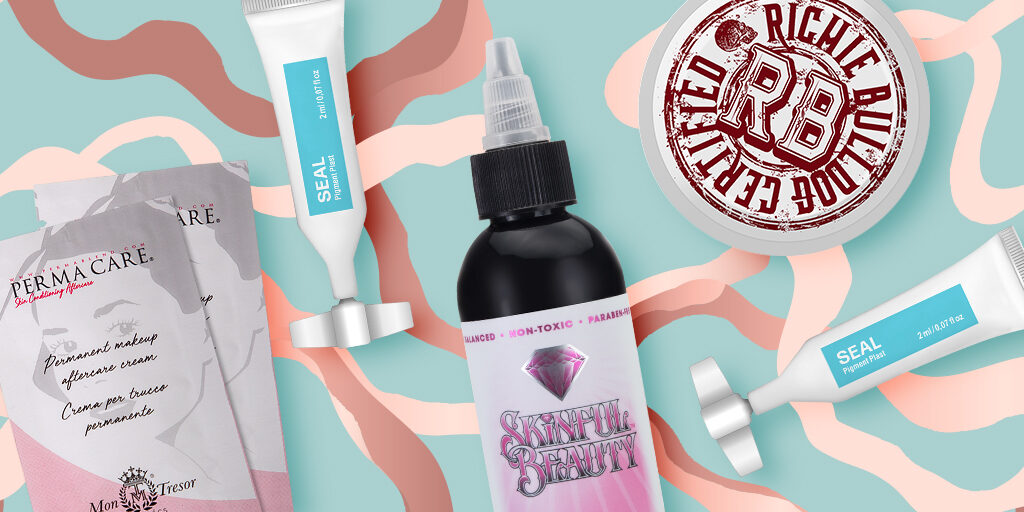
Does the course include things like promotion and social media training?
Once you’ve learned your PMU skills, you’ll need to learn about how to promote yourself online - including on social media - and find new clients.
Right now, PMU is still in much higher demand than artists are able to meet, which does make things easier. However you still shouldn’t neglect the customer service and promotional aspects of your new career – building up a clientele can still be quite tricky when you start out.
Some PMU training courses will include elements such as setting up your social media profiles, learning some basic SEO to get your site appearing in Google search listings, using the right hashtags, and watermarking your images. It’s ultimately up to you how much time you want to dedicate to this kind of promotion, but if you want a consistent stream of clients, at least some of this knowledge is needed.
Another element of your social media presence is providing regular high-quality, well-lit images and videos of your work. As you’ll be working in a visual medium, you’ll probably find that Instagram is your most valuable tool and remembering to take before and after as well as healed photos means you have content whenever you need it.
Case studies are a great opportunity to build your portfolio, and newly qualified artists also tend to offer discounted treatments to further grow their portfolio and ensure they have plenty of content to share on their social channels and help with generating some bookings.
Visitors to your social media page want to know about your techniques, what goes on behind the scenes, what pigments and shades you’re using, and the human side of things – like what difference that treatment made to your client.
Showing your face on your social media through reels and stories can really add a personal touch to your marketing and potential clients can feel like they get to know you before their appointment, which helps to build their trust and strengthen the potential client relationship.
Will a PMU training course teach me about waste management?
This might be the least glamorous aspect of your new career, but that doesn’t mean you can ignore it!
When you’re performing medical treatments and using sharp objects such as needle cartridges that break the skin, you have to have the right waste system in effect. At the very least you’ll require a sharps bin – these are bright yellow plastic boxes with a special lid that can be temporarily or permanently closed. There will be markings to show what’s in the box, a fill limit, and they’ll have to be disposed of in a specific way – all of which will be covered in a reputable training course.
Completely aside from the physical danger of sharp objects near unprotected or unaware bodies, your used needle cartridges will have biohazardous material on them. You’ll learn all about this in your blood borne pathogens training, but an incorrectly used sharps bin can be a huge risk. Learning how to dispose of your clinical waste safely and correctly is key to maintaining a safe clinic.
Do I need to learn about data protection?
If you’re setting up your own PMU business, absolutely. You should learn about this and GDPR specifically in order to protect yourself legally. Data protection can be a minefield, but the most important part is making sure that your clients’ (and potential clients’) data is protected.
There is a lot to consider when you start your journey into permanent makeup, and it might seem a little overwhelming at first. Just know that putting the time, effort and research in now could save you thousands of pounds, and positively impact your future career. Committing to a course should never be a rushed decision or process, as it is a huge investment - both financially and professionally.
It’s an exciting time to get into PMU as the industry continues to grow and expand, and we hope that every aspiring PMU artist finds the training course that works for them!
